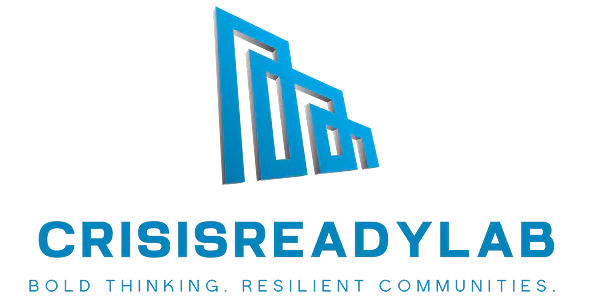Why Most Recovery Timelines Are Wrong
Disaster recovery doesn’t follow a project plan.
It doesn’t move in neat, orderly phases.
And it definitely doesn’t care about your fiscal year.
Yet for some reason, we keep pretending it does.
Whether it’s the three phases of response, recovery, and mitigation—or the timelines listed in funding guidance—recovery is too often described like a linear process with clearly defined start and end dates. Communities are told to expect certain things to happen in year one, others in year two, and so on.
But if you’ve ever worked in real recovery, you know the truth:
The timeline is never what they say it will be.
It starts earlier than most people realize, takes longer than anyone wants, and unfolds in overlapping layers—not clean handoffs.
The Calendar Isn’t Your Friend
Here’s a common trap: leaders try to match the recovery to the calendar. They ask questions like:
When will we move into the long-term phase?
When should we expect the next funding stream to arrive?
When will things feel normal again?
They look for a clear sequence:
Response → Short-term Recovery → Long-term Recovery → Done
But what actually happens is more like this:
Long-term infrastructure planning starts before short-term debris removal is even done.
Housing programs must begin design while residents are still living in shelters.
Local businesses need support immediately—but federal programs won’t arrive for 12 to 18 months.
Recovery isn’t sequential. It’s stacked.
You’re doing urgent work and long-range planning at the same time. You’re stabilizing the present while trying to imagine a future. And you’re constantly adjusting because nothing rolls out exactly as planned.
Why Linear Timelines Fall Apart
Communities often set themselves up for frustration because they build recovery expectations on models that don’t match reality. Let’s look at a few common issues:
1. Assuming Response Is Over Before Recovery Starts
Reality: You’ll still be dealing with crisis-related issues—evacuations, debris, health impacts—long into what’s technically called the “recovery phase.” Recovery starts while response is still ongoing.
2. Expecting All Funding to Arrive in Year One
Reality: Some of the biggest funding streams (like HUD CDBG-DR or certain philanthropic dollars) may not show up for 12–24 months. If your recovery plan depends on money arriving fast, you’ll stall.
3. Waiting for “Phase 2” Before Launching Key Programs
Reality: There is no Phase 2. The moment you wait for doesn’t arrive. You have to layer in long-term work while you’re still navigating the mess.
4. Tying Milestones to External Calendars
Reality: Grant performance periods, election cycles, or agency fiscal years don’t match community needs. Recovery work often extends beyond the term of whoever’s in office or the limits of a grant.
A Better Way to Think About Timelines: Layers, Not Phases
One of the most helpful shifts communities can make is to stop thinking in phases and start thinking in stacks or layers:
You will be managing emergency stabilization, early recovery coordination, and long-term planning all at once.
You will have fast-track programs (like small business bridge grants) operating alongside slow-burn efforts (like permanent housing reconstruction).
You will need to balance the urgent, the important, and the politically visible—often with limited staff and a distracted public.
This is normal. It’s not a sign of bad planning.
It’s a sign that you’re actually recovering.
Why This Matters for Local Leaders
When your recovery plan is built on the wrong timeline, a few predictable things happen:
You chase the wrong milestones
You under-resource early decisions that shape the next 5 years
You burn out your team trying to “get to the next phase” that never arrives
You lose credibility when timelines slip—even though they were never realistic in the first place
But if you plan for overlapping timelines, layered activity, and nonlinear progress, your team can work with more flexibility, clarity, and resilience.
It’s not about moving faster—it’s about moving smarter, with fewer surprises and less wasted effort.
What You Can Do Instead
If you’re trying to lead or support recovery and feel like the calendar is working against you, here are some shifts that can help:
1. Set expectations early and often.
Let your team, partners, and community know that recovery won’t follow a simple timeline. Normalize complexity. You’ll reduce frustration down the line.
2. Use layered planning.
Structure your workstreams in layers—not phases. What are you doing now, what’s coming soon, and what needs to be seeded for the long haul? Build systems to manage all three at once.
3. Document decisions as you go.
Timelines will shift. People will rotate out. Make sure you’re capturing rationale, lessons, and progress so your recovery can survive turnover.
4. Invest in capacity early.
You may not know what you’ll need in Year 3, but if you start building implementation capacity now, you’ll be ready to catch the next wave of work when it lands.
5. Anchor around outcomes, not dates.
The goal isn’t to check off a phase. It’s to rehouse families, rebuild infrastructure, restart the economy, and restore trust. Focus your team around those outcomes—even if the timeline shifts.
Final Thought: Progress Isn’t Linear—But It’s Still Progress
Recovery feels messy because it is.
That doesn’t mean you’re failing.
It means you’re working through the real complexity of rebuilding a community after crisis.
Your job isn’t to fit the recovery into a pre-set timeline.
It’s to build systems that can adapt, deliver, and keep moving—no matter what the calendar says.
Want to go deeper?
Explore our full training catalog for lessons and tools that help you plan smarter, coordinate across layers, and lead recovery on timelines that reflect the real world—not a spreadsheet.


